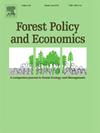优化森林规划:通过多目标分离公式平衡木材生产和碳封存
IF 3.8
2区 农林科学
Q1 ECONOMICS
引用次数: 0
摘要
本研究为森林规划问题(FPP)引入了一个多目标模型,旨在通过确定造林处理、土地采伐比例、净碳封存和木材流量的最佳组合来优化森林管理。利用广义析取规划(GDP),该模型解决了两个相互冲突的目标:最大化净现值和最大化二氧化碳固存,同时考虑了来自第三方的碳固存损失。该模型使用Hull重组和Big-M重组将其重新表述为混合整数线性规划(MILP)问题,并使用阿根廷Misiones一家森林公司的数据进行验证。结果表明,增加森林面积减少了对外部木材的依赖,林分特征和多样化处方比单纯扩大森林面积更有效地提高了CO2的固碳能力。此外,对于复杂的问题,Hull的重新表述被证明是更健壮的,而Big-M对于更简单的情况是有利的。本文章由计算机程序翻译,如有差异,请以英文原文为准。
Optimizing forest planning: Balancing timber production and carbon sequestration through a multi-objective disjunctive formulation
This work introduces a multi-objective model for the Forest Planning Problem (FPP), designed to optimize forest management by determining the best combination of silvicultural treatments, land harvesting proportions, net carbon sequestration, and timber flow. Using Generalized Disjunctive Programming (GDP), the model addresses two conflicting objectives: maximizing net present value and maximizing sequestration, while accounting for carbon sequestration losses from third parties. The model is reformulated as a mixed-integer linear programming (MILP) problem using both Hull reformulation and Big-M reformulation and validated with data from a forest company in Misiones, Argentina. Results show that increasing forest area reduces reliance on external timber, and that stand characteristics and diverse prescriptions are more effective for improving sequestration than simply expanding forest area. Additionally, the Hull reformulation proves more robust for complex problems, while Big-M is advantageous for simpler cases.
求助全文
通过发布文献求助,成功后即可免费获取论文全文。
去求助
来源期刊

Forest Policy and Economics
农林科学-林学
CiteScore
9.00
自引率
7.50%
发文量
148
审稿时长
21.9 weeks
期刊介绍:
Forest Policy and Economics is a leading scientific journal that publishes peer-reviewed policy and economics research relating to forests, forested landscapes, forest-related industries, and other forest-relevant land uses. It also welcomes contributions from other social sciences and humanities perspectives that make clear theoretical, conceptual and methodological contributions to the existing state-of-the-art literature on forests and related land use systems. These disciplines include, but are not limited to, sociology, anthropology, human geography, history, jurisprudence, planning, development studies, and psychology research on forests. Forest Policy and Economics is global in scope and publishes multiple article types of high scientific standard. Acceptance for publication is subject to a double-blind peer-review process.
 求助内容:
求助内容: 应助结果提醒方式:
应助结果提醒方式:


